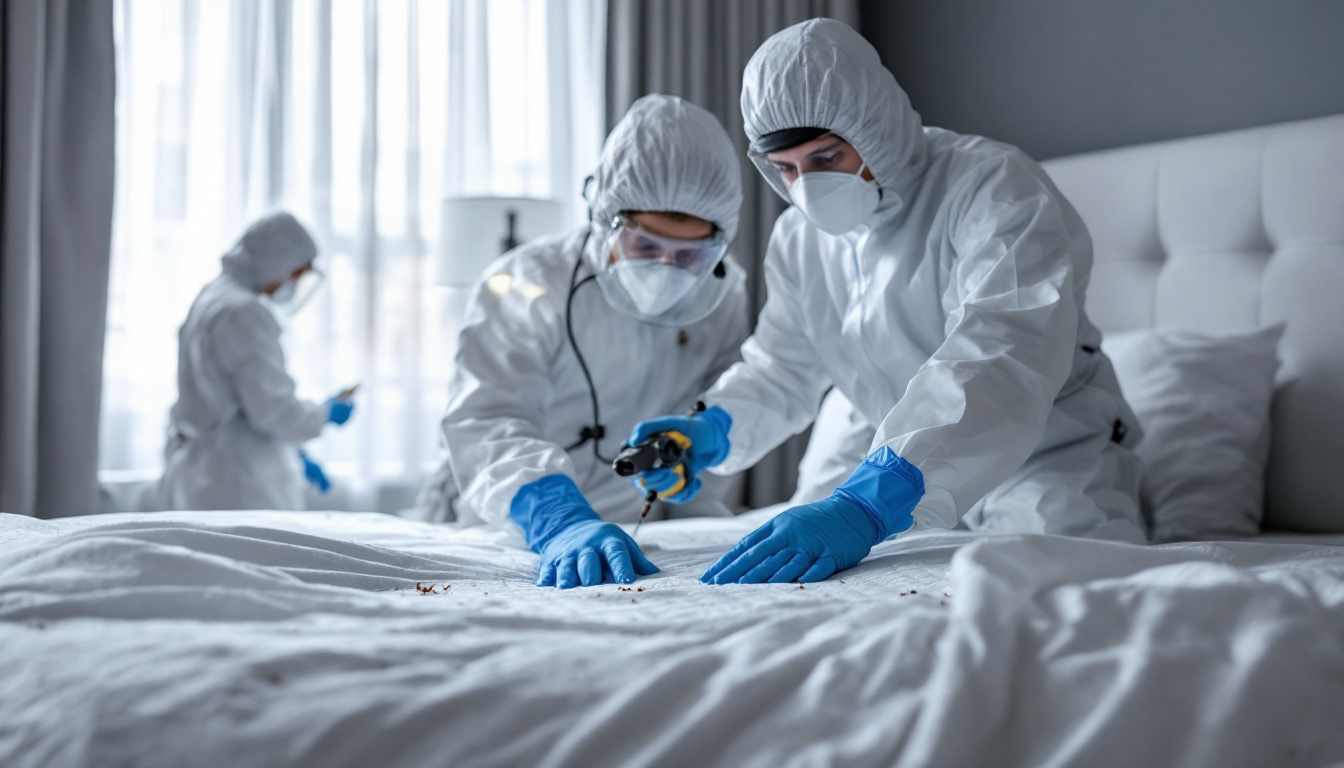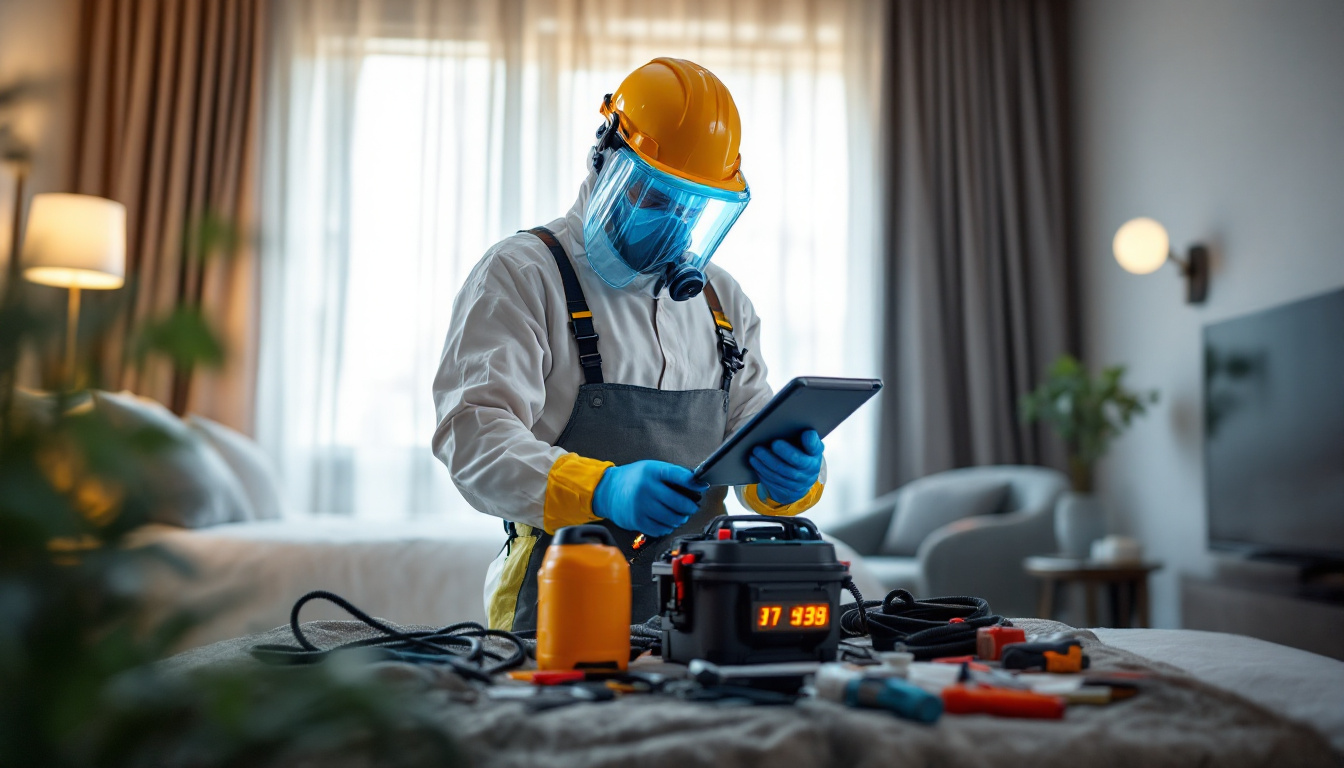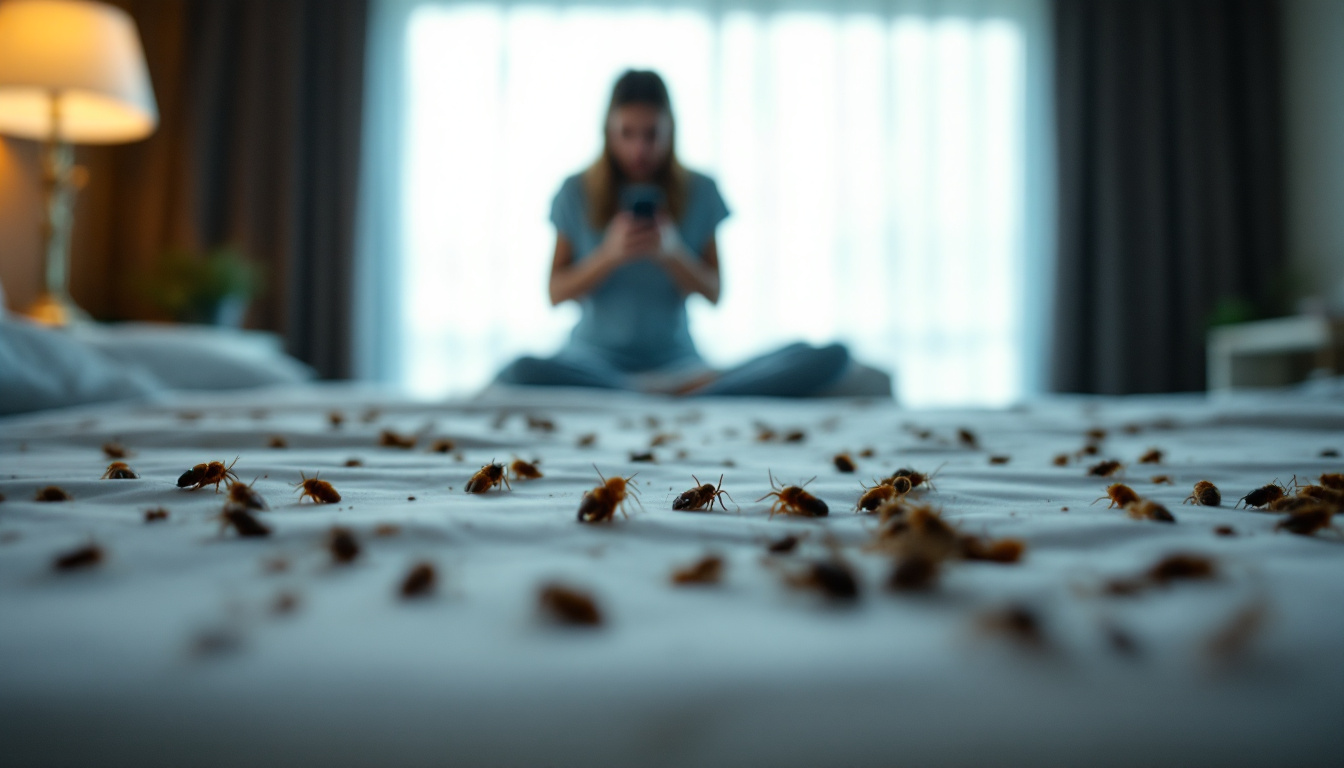How to Inspect for Bed Bugs in Hotel Rooms
In 2025, ensuring a comfortable and pest-free stay at hotels is more critical than ever. For anyone seeking a reliable bed bug inspection hotel rooms process, this guide offers expert insights into effective strategies that not only boost guest satisfaction but also maintain brand integrity. Bed bugs, bugs, and other pests continue to be major concerns for travelers, and knowing how to inspect and address these issues can save guests from an unpleasant experience.
Pest Control Services
Comprehensive Pest Control Solutions
Pest control services have evolved to offer comprehensive solutions tailored to various environments, including hotels. These services encompass inspection, treatment, and prevention strategies to manage and eliminate bed bug and bed bugs infestations effectively. With the rise in bed bug sightings, many hotels are now investing in professional pest control to ensure guest safety and satisfaction. A minor bug infestation in one hotel room can quickly turn into a larger issue if not addressed promptly.

Many pest control companies utilize advanced technology and methods, such as heat treatments and specialized bed bug treatment protocols that target pests at all life stages. Regular inspections help identify early signs of bed bug activity and live bugs, including subtle evidence like bed bug droppings and even adult bed bugs. These experts also monitor for bed bug eggs that may be hidden in areas like the bed frame or within crevices of upholstered furniture. By following a thorough inspection process, hotels can catch any potential bedbug infestation before it escalates.
Leveraging both commercial and residential pest control expertise, professionals are now incorporating innovative tools—from bed bug detection dogs to smart traps—that enhance the reliability of every bed bug inspection. These proactive measures also address less obvious indicators, such as unexplained bed bug bites on guests. This high level of scrutiny not only ensures effective bed bug prevention but also reassures guests that every hotel room is being carefully monitored.
Understanding Integrated Pest Management
Integrated Pest Management (IPM) is a holistic approach that combines multiple strategies to manage pests sustainably. By integrating IPM, hotels can reduce reliance on harsh chemicals and better prevent bed bugs from establishing themselves. For example, educating hotel staff about early indicators—including noticing a hiding spot behind a headboard or along the mattress seams—is vital. This knowledge extends to identifying subtle clues like bed bug eggs or even bed bug bites on guests, which may sometimes be found on upholstered furniture.
A strong IPM program involves regular training sessions where housekeeping staff and even the hotel manager learn to recognize the early stages of an infestation. This approach empowers the entire team to respond effectively and even instruct hotel guests on simple precautions. Combining efforts, such as advising guests to use a luggage rack and keeping luggage elevated, further aids in reducing risk. Ultimately, by making regular inspections a standard practice, hotels foster a collaborative environment that effectively minimizes the chance of a bed bug infestation.
Commercial Services
Commercial Bed Bug Control Strategies
Commercial bed bug control strategies are essential for hotels aiming to maintain a pest-free environment in every hotel room and common area. These strategies often include a combination of proactive measures such as regular inspections, staff training, and guest education. A proper bed bug inspection should cover not only the obvious hiding places but also less noticeable areas like nearby furniture, chairs, and tables. Adding to this, a simple checklist might remind hotel staff to look for bug activity and even use a plastic bag to capture a suspect for identification.

In addition, effective protocols require hotels to have clear procedures when a bed bug issue is suspected. For instance, if any infested room is identified, the hotel management should be alerted immediately so that swift action can be taken before the situation escalates. Using a designated luggage rack in every guest room is one preventive measure that reduces the chance of bugs transferring from luggage to the room’s furniture. Regular inspection and proper staff protocols not only address the bed bug problem at its root but also help in long-term bed bug prevention.
The importance of well-trained hotel staff cannot be overstated. When every member—from the housekeeping carts to the hotel bed area—is part of the monitoring process, even subtle signals of a potential bed bug infestation are caught early. By maintaining high standards in bed bug inspection hotel rooms, hotels can protect both their reputation and their bottom line.
Preventing Rodent Risks Post-COVID-19
The COVID-19 pandemic has shifted pest control priorities in hotels, leading to increased vigilance around rodent risks. Although this guide focuses on bed bugs, strategies from residential pest control can also be adapted to manage rodents. With vacant properties and altered routines, rodent sightings have increased. Therefore, hotels should seal entry points, monitor waste disposal practices, and regularly inspect all areas—including those behind upholstered furniture—to ensure no bug infestations develop inadvertently.
Hotel Pest Management
Common Bed Bug Issues in Hotels
Bed bugs are notorious for their ability to hide in small crevices, making them a common issue in hotels. These pests are often introduced by travelers, who may unknowingly carry them into a hotel room via personal luggage. Once established, a single bed bug infestation can multiply rapidly, affecting both the quality of the guest rooms and overall guest satisfaction.
Common signs include dark spots on bedding, shed skins, and the appearance of live bugs. A vigilant hotel guest may spot these signs early, prompting an immediate review by the hotel management. Moreover, a comprehensive check should also extend to less obvious areas such as skirting boards and housekeeping carts, where even a few bed bug droppings might signal a larger problem.
How to Inspect Hotel Rooms for Bed Bugs
A systematic approach is key when performing a thorough inspection in a hotel room. Start by examining mattress seams, headboards, and hotel bed structures for signs of bed bug activity. Don’t forget to check nearby furniture and even the bed frame for any traces of bed bug eggs. Utilizing a flashlight can be particularly useful for uncovering dark corners and hidden spaces that might serve as a hiding spot.
During a bed bug inspection, it is also advisable to include the use of a mattress protector as part of your preventive measures. In some cases, pest control experts even use a plastic bag to isolate and examine a suspicious specimen. If any evidence of a bedbug infestation is detected, report it immediately to hotel management so that prompt measures can be initiated.
Staff Training for Effective Bed Bug Prevention
Training sessions for hotel staff are a cornerstone of effective bed bug prevention. Employees should be educated on the signs of a bed bug infestation, proper inspection techniques—including how to perform a regular inspection—and the protocols for reporting any issues. Workshops can also cover how to identify bed bug droppings or adult bed bugs, ensuring that even subtle signs like bed bug bites are recognized early.
Regular training not only empowers housekeeping staff and the hotel manager but also fosters a culture of vigilance among all employees. A well-informed team is critical to mitigating a potential bed bug problem and ensuring that every hotel room remains a safe haven for guests.
Financial Impact of Bed Bug Infestations
The financial impact of bed bug infestations can be profound for hotels. Beyond the costs associated with pest control treatments, hotels may face revenue loss due to diminished guest satisfaction and negative online reviews. A single bed bug infestation may lead to a cascade of challenges—from extensive remediation efforts to long-term reputational damage.
Investing in proactive pest management and a thorough inspection process helps minimize these risks. Prompt action against even minor bug infestations ensures that issues are contained before they spread, protecting both the hotel’s brand and its revenue.
Preventing Bed Bug Spread in Hotels
Effective bed bug prevention requires a multifaceted approach. Regular inspections of every hotel room, combined with staff training and guest education, are essential. For instance, instructing guests to store their belongings on a designated luggage rack and keeping their luggage off the floor can dramatically reduce the risk of a bed bug infestation.
In addition, hotel management should perform a regular inspection of all furniture—from chairs and tables to upholstered furniture—to ensure that no hidden areas are overlooked. This collaborative approach between hotel staff and hotel guests goes a long way toward preventing the spread of bug activity and maintaining a pest-free environment.
Impact of Pest Sightings
Pest sightings, including the appearance of live bugs or even a few adult bed bugs, can have an immediate negative impact on a hotel’s reputation and revenue. In today’s digital age, a single report of a bed bug issue can trigger a wave of negative reviews online, affecting future bookings and guest satisfaction.

To mitigate these risks, it is essential for the hotel manager and hotel staff to act swiftly upon receiving any report of pest activity. Regular inspections—extending to areas like skirting boards and housekeeping carts—ensure that any emerging problem is addressed before it escalates into a full-blown bedbug infestation.
In Conclusion
Inspecting for bed bugs in hotel rooms is a critical component of maintaining guest satisfaction and protecting your brand’s reputation. By following a systematic bed bug inspection process and implementing a mix of regular inspections, proactive bed bug treatment, and comprehensive staff training, hotels can effectively prevent and manage bed bug infestations. Whether it’s checking mattress seams, using a luggage rack, or ensuring every piece of furniture is scrutinized, these steps go a long way in preventing a minor issue from becoming a major bug infestation.
Protect Your Stay with EnviroGuard Pest Control
Don't let bed bugs disrupt your hotel experience. At EnviroGuard Pest Control, we understand the importance of a pest-free environment for your guests' safety and satisfaction. Our local experts bring over 40 years of combined experience to provide eco-friendly and effective pest control solutions for every hotel room and even offer residential pest control services. Whether you are dealing with a potential bed bug infestation or a minor bed bug issue, our comprehensive approach—including expert bed bug inspection and bed bug treatment—ensures that every aspect of pest management is covered. Trust us to safeguard your property and maintain top guest satisfaction. For immediate assistance, please Contact Us today.

